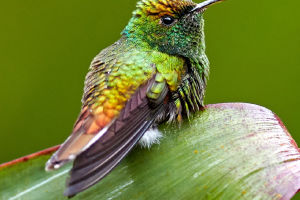Egrets are beautiful and graceful birds that are found in many parts of the world, including North and South America, Europe,
Africa, Asia, and Australia. These birds are known for their long, slender necks, and their ability to stand motionless in shallow water while they hunt for fish and other small prey.
While egrets are often admired for their beauty and hunting prowess, they are also important indicators of the health of wetland ecosystems, and their conservation is crucial for the survival of many other species that rely on wetlands for their habitat.
There are several different species of egrets, including the great egret, snowy egret, and cattle egret, among others. These birds are often found in wetlands, including marshes, swamps, and estuaries, where they can find plenty of fish and other prey. Egrets are also known to nest in trees, and they often gather in large colonies during the breeding season.
One of the biggest threats to egrets and other wetland species is habitat loss. Wetlands are among the most threatened ecosystems in the world, and many have been drained, filled in, or otherwise degraded by human activity.
This has resulted in a loss of critical habitat for egrets, as well as other species such as herons, ibises, and cranes. In addition, the pollution of wetlands through the discharge of pollutants, fertilizers, and other chemicals can have negative impacts on the health of egrets and other wetland species.
Conservation efforts for egrets and other wetland species have been ongoing for many years, and there have been some notable successes in recent decades.
One of the most important conservation strategies has been the creation of protected wetland areas, such as national parks and wildlife refuges. These areas provide critical habitats for egrets and other wetland species, and they also serve as important research sites for scientists studying wetland ecosystems.
In addition to protected wetland areas, there have also been efforts to restore degraded wetlands and to create new wetlands in areas where they have been lost. These efforts can involve the removal of invasive species, the replanting of native vegetation, and the construction of structures such as dams and levees to restore wetland hydrology.
These restoration efforts can be costly and time-consuming, but they are critical for the long-term conservation of egrets and other wetland species.
Another important aspect of egret conservation is public education and outreach. Many people are not aware of the important role that wetlands play in supporting biodiversity, and they may not realize the negative impacts that human activity can have on these ecosystems.
By educating the public about the importance of wetland conservation and the value of biodiversity, conservationists can help to build support for efforts to protect and restore these critical ecosystems.
Egrets are important indicators of the health of wetland ecosystems, and their conservation is crucial for the survival of many other species that rely on wetlands for their habitat.
Habitat loss, pollution, and other human impacts continue to threaten egrets and other wetland species, but there are many ongoing conservation efforts that are helping to protect and restore these critical ecosystems.
Through a combination of protected areas, restoration efforts, and public education, we can work to ensure that egrets and other wetland species continue to thrive for generations to come.


